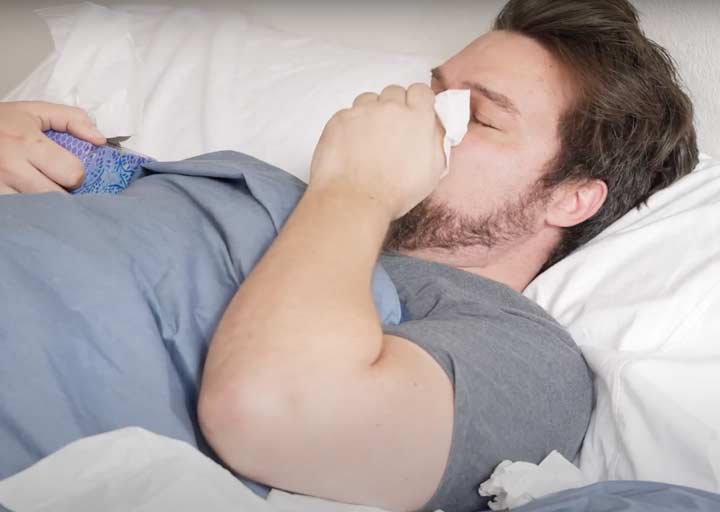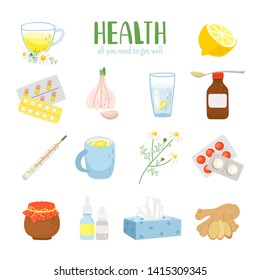
When it comes to cold and flu remedies for kids, there are a number of options. You can use salt water, Nasal drops, Vitamin C and avoid smoking to relieve stuffy nose. A doctor may be needed if the symptoms do not disappear after three days. Symptoms of a cold or flu may be related to a child's lifestyle, such as smoking or exposure to a lot of dust or pollen.
Home remedies for a stuffy nostril
Home remedies for the flu and cold for children are a good option if your child has a stuffy or stuffy nose. While you can take over-the-counter cough medicine, this may not help young children. It may worsen the condition by drying out their nasal passages. Encourage your child to drink lots of water to maintain nasal tissue moisture. You can also make 100% strawberry popsicles, or buy them in the grocery. These can be enjoyed by your child more than water. Therefore, you should avoid any products that contain caffeine.
Gargling using salt water
For centuries, salt water gargling has been practiced. A study of 400 people discovered that gargling salt water led to 40% less upper respiratory tract infection. Gargling with salt water draws fluid from inflamed tissues of the throat, which helps to loosen mucus and flush out other irritants. Gargling with salt water is recommended by the Mayo Clinic and should be done for about three seconds.

Nasal saline drops
Children who suffer from respiratory infections or the common cold may experience congestion in their noses. This congestion can be relieved with nasal saline sprays or drops. These remedies can be used to help children breathe more easily by reducing swelling and thinning the mucus. Because they do not contain any medications, they are recommended by pediatricians for children and infants. You can learn more about how to apply these drops onto your child's nostrils.
Vitamin C
Vitamin C has been long touted as a cure for common cold symptoms, but there is not much evidence supporting its use as therapeutic treatment. Although a preventive dose of vitamin C may be beneficial in reducing symptoms such as the common cold, its benefits for children aren't clear. It will take more research to determine the right dose and when to start supplementation. The effects of prophylactic vitamin C on children are much greater than those seen with therapeutic doses.
Echinacea
Echinacea is an excellent option for parents who want natural remedies for colds and flus. This perennial flowering plant is also known as coneflower and has brightly colored blossoms around a spiky seedhead, which can be red or violet. There are many varieties of Echinacea. Their medicinal properties can differ. This herb is rich in phenols, which are active compounds that control enzymes and receptors on cells.

FAQ
What are 5 ways to live a healthy lifestyle?
Living a healthy lifestyle includes eating right, exercising regularly, getting enough sleep, managing stress, and having fun! You should avoid processed foods, sugar, or unhealthy fats. Exercise is good for your body and muscles. Sleeping enough is good for memory and concentration. Stress management helps reduce anxiety and depression. Fun is key to staying young and vibrant.
Why do we need to have a healthy lifestyle?
Having a healthy lifestyle helps us live longer, happier lives. A healthy diet, regular exercise and good sleep habits will prevent the development of diseases such as heart disease, stroke, cancer, diabetes, and Alzheimer's.
A healthy lifestyle can also help improve mental health and make it easier to deal with daily stressors. Healthy living will boost self-confidence and make you look and feel younger.
What is the working principle of an antibiotic?
Antibiotics can be used to kill bacteria. To treat bacterial infections, antibiotics are used. There are many types and brands of antibiotics. Some can be taken orally, others are injected and some are applied topically.
Antibiotics are often prescribed to people who have been exposed to certain germs. To prevent shingles, an oral antibiotic may be prescribed to someone who has had chicken pox. An injection of penicillin may be necessary to prevent pneumonia if someone has strep.
A doctor should give antibiotics to children. Side effects of antibiotics can be more dangerous for children than for adults.
The most common side effect of antibiotics is diarrhea. Other possible side effects include stomach cramps, nausea, vomiting, allergic reactions, headaches, dizziness, and rashes. These side effects usually disappear once treatment has ended.
How can I live my best everyday life?
It is important to identify what makes you happy. Once you know what makes you happy, you can work backwards from there. Asking other people how they live their best lives every day is also a good idea.
You can also read books like "How to Live Your Best Life" by Dr. Wayne Dyer. He discusses finding happiness and fulfillment throughout our lives.
What's the difference between fat or sugar?
Fat is an energy source from food. Sugar is a sweet, naturally occurring substance in fruits and vegetables. Both fats and sugars provide the same number of calories. Fats have twice the calories of sugars, however.
Fats are stored in the body and contribute to obesity. They cause cholesterol buildup which can lead to strokes and heart attacks.
Sugars are quickly absorbed into the body and provide instant fuel. This causes blood sugar levels to rise. High blood glucose levels can pose a danger because they increase the chance of developing type II Diabetes.
Statistics
- The Dietary Guidelines for Americans recommend keeping added sugar intake below 10% of your daily calorie intake, while the World Health Organization recommends slashing added sugars to 5% or less of your daily calories for optimal health (59Trusted (healthline.com)
- According to the 2020 Dietary Guidelines for Americans, a balanced diet high in fruits and vegetables, lean protein, low-fat dairy and whole grains is needed for optimal energy. (mayoclinichealthsystem.org)
- Extra virgin olive oil may benefit heart health, as people who consume it have a lower risk for dying from heart attacks and strokes according to some evidence (57Trusted Source (healthline.com)
- In both adults and children, the intake of free sugars should be reduced to less than 10% of total energy intake. (who.int)
External Links
How To
How to Live a Healthful Lifestyle
A healthy lifestyle is one where you are able to maintain your weight, your health and your fitness level. Healthy living means eating right, exercising regularly, getting enough rest, and staying away from harmful substances like alcohol, tobacco, cocaine, and drugs. A healthy lifestyle will help you feel great and stay in shape. You are also less likely to develop chronic diseases such heart disease and stroke, diabetes or cancer.
The main goal of this project was to provide a step-by-step guide on how to live a healthier life. The introduction was the first portion of the project. It describes the benefits of living a healthy life, what it means, and who we are. The body paragraphs are a collection of tips for living a healthy life. Finally, I wrote my conclusion. It summarizes the entire article and gives additional resources if required.
This assignment taught me how to write a concise paragraph. I also learned how topic sentences and supporting details can be organized. Moreover, I improved my research skills because I had to find specific sources and cite them properly. I learned proper grammar to write.